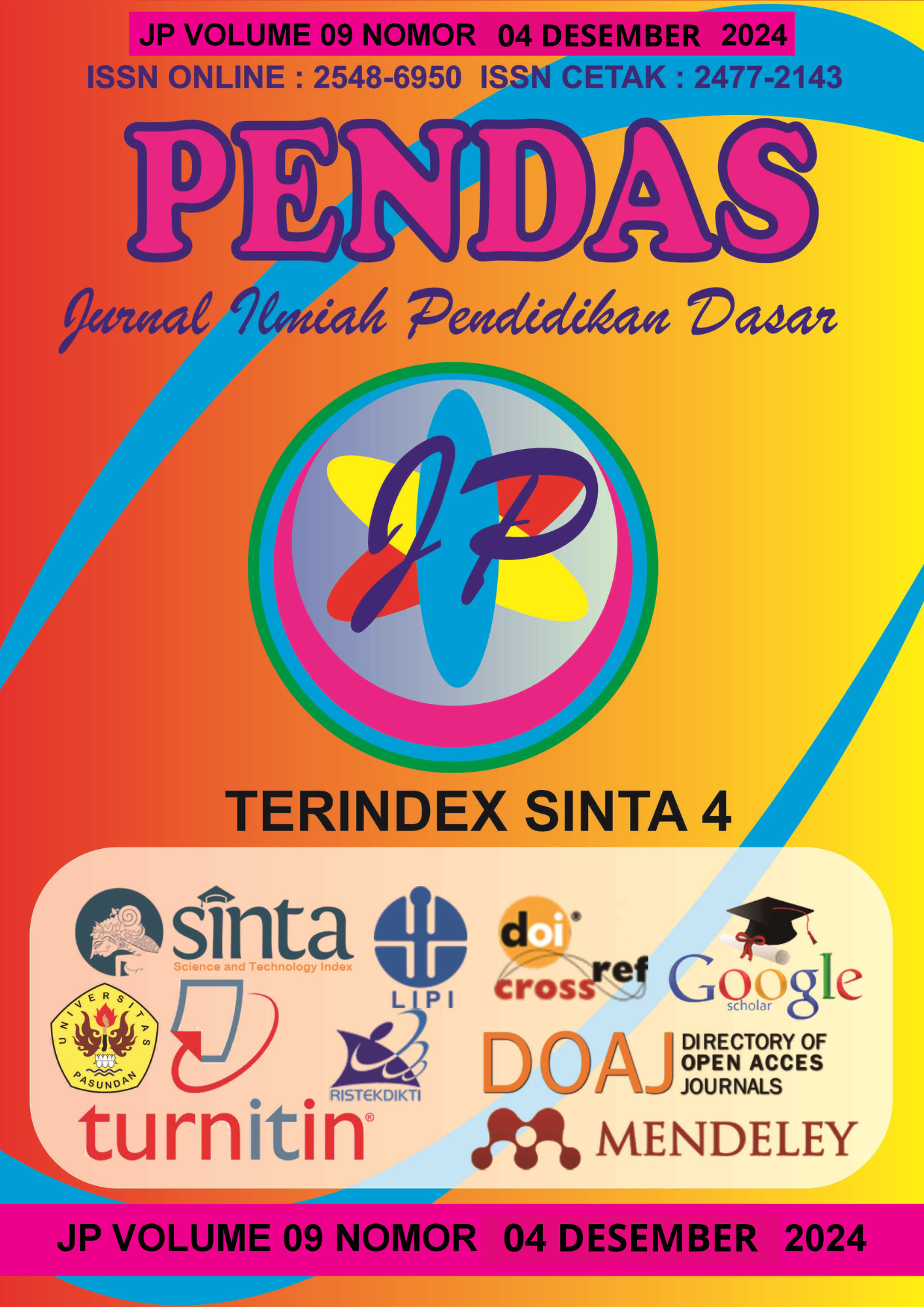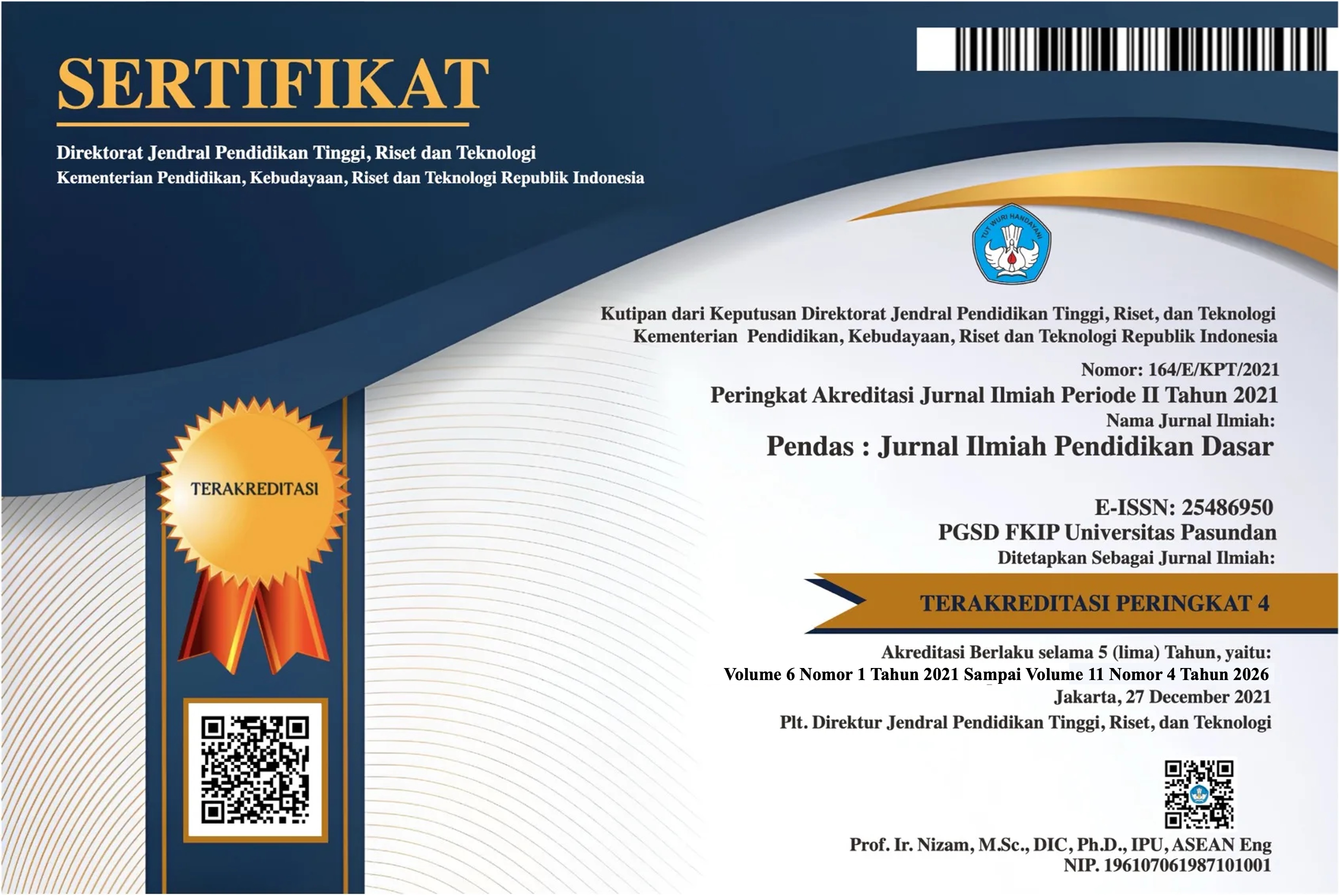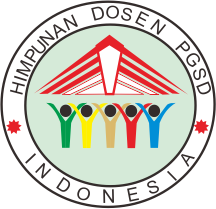ANALISIS SIKAP SISWA PADA PEMBELAJARAN IPAS KURIKULUM MERDEKA DI KELAS V SDN 13 SINGKAWANG
DOI:
https://doi.org/10.23969/jp.v9i04.17874Keywords:
factors, independent curriculum, IPASAbstract
This research aims to: 1) To find out students' attitudes towards learning science and science in the Independent Curriculum, students in the independent curriculum for class V at SDN 13 Singkawang, 2) To find out what are the strengths and weaknesses in students' attitudes towards learning science and science in the independent curriculum for class V at SDN 13 Singkawang. . The type of research used is quantitative research with a quantitative descriptive research design. This research was conducted at SDN 13 Singkawang. The subjects in this research were 23 class V students, the principal and class V teachers. The data collection techniques and instruments in this research were interview questionnaires and documentation. The results of the research show that: 1) students' attitudes towards learning science and science in the independent curriculum for class V at SDN 13 Singkawang are in the positive category, 2) the weaknesses and strengths in students' attitudes towards learning science and science in the independent curriculum for class V at SDN 13 Singkawang are that there are students who still listen teachers, listen and don't make a fuss, but there are still some students who have difficulty understanding some of the material, this is caused by several factors, namely internal and external factors. The shortcomings in the attitude of learning social sciences using the independent curriculum are the shortcomings such as teachers' unpreparedness in changing the curriculum, lack of training related to the independent curriculum, lack of infrastructure and facilities, and a less than optimal learning system, while the advantages in students' attitudes towards learning social sciences using the independent curriculum are that teachers' creativity during the learning process increases and teachers are of course free to choose the teaching tools they want.
Downloads
References
Angga, A., dkk. (2022). Komparasi Implementasi Kurikulum 2013 dan Kurikulum Merdeka di Sekolah Dasar. Jurnal Basicedu. 6(4). 5877–5889.
Hartoyo, A., Rahmadayanti, D. (2022). Potret Kurikulum Merdeka, Wujud Merdeka Belajar di Sekolah Dasar. Jurnal Basicedu. 5(4). 2247–2255.
Kemendikbud Nomor 56 Tahun 2022 tentang Pedoman Penerapan Kurikulum dalam Rangka Pemulihan Pembelajaran (Kurikulum Merdeka).
Langgulung, H. (1988). Asas- Asas Pendidikan Islam. Jakarta: Al-Husna.
Muhsam, J., Hasyida, S., Aiman, U. (2021). Penerapan model pembelajaran contextual teaching learning (CTL) pada materi gaya bagi siswa kelas 4 sekolah dasar. Jurnal Elementary. 3(2). 53-51.
Sugiyono. (2017). Metode Penelitian Kuantitatif, Kualitatif dan R&D. Bandung: Alfabet.
Warsidah, dkk. (2022). Implementasi Pembelajaran Berbasis Kurikulum Merdeka pada Peserta Didik Kelas 4 Sekolah Dasar Negeri N0. 16 Pontianak Utara. Jurnal Pendidikan Dasar. 6(2). 233-24.
Downloads
Published
Issue
Section
License
Copyright (c) 2024 Pendas : Jurnal Ilmiah Pendidikan Dasar

This work is licensed under a Creative Commons Attribution 4.0 International License.



















